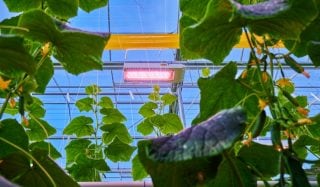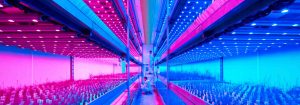Be the first! Get the latest news and updates - Subscribe to our newsletter!
Increase growth with a Philips light recipe
With Philips LED grow lights, you get much more than just lighting. You get a Philips light recipe – tailormade instructions for lighting designed to help you achieve the best results for your specific crop and your specific conditions. With a Philips light recipe, your crops benefit from decades of knowledge and research on horticulture LED grow lights, used to cultivate diverse vegetables, fruits and floriculture crops. A light recipe is your fast track to increasing growth for every crop.
Elements of a Philips light recipe
Philips light recipes capture all the elements of lighting that steer plant growth. They are the result of hundreds of trials and projects between Philips Horticulture Lighting, growers and researchers to investigate how LED grow lights affect various crops and growing phases of plants. Today, we offer a wide array of light recipes, based on proven results for specific varieties, growth phases and cultivation set-ups. From tissue culture, propagation and seedlings to young plants, potted plants and high wire vegetables.
- Light level
The amount of light shed on a plant (in µmol/s2). Some crops like cucumbers love high light levels, while others prefer lower light levels. Our light recipe sets the optimum light levels for specific crops.
- Spectrum
The spectrum is the range from ultraviolet to infra-red that influences plant growth. Plants are particularly sensitive to a mix of red and blue light and each light recipe specifies the color of the LED lighting.
- Uniformity
Uniformity is how evenly the light is spread across all the crops, not just the ones in the middle. Uniform light ensures uniform plant growth and makes automatic harvesting possible.
- Timing
A head of lettuce needs about 14 hours of light per day, while basil prefers 20 hours of light a day. And that may change across the season. A light recipe specifies when to turn the lighting on and off to get the best results based on your geographical location.


How LED lighting improves your crop
LED grow lights can improve many aspects of your business. This depends on your crop, environment, light recipe and other factors. Growers have achieved the following benefits with Philips GreenPower LED solutions and light recipes:
- Higher yield
- Shorter growth cycles
- Better crop quality and uniformity
- More plants in the same space
- Energy savings
- Higher germination, rooting and multiplication factor
- Improved/controlled stretching process
Philips GrowWise Control System – Custom light recipes for full flexibility and control
Philips GrowWise Control System gives you full flexibility and control over your lighting to improve your crop quality, productivity and operational efficiency. It allows you to easily create and run custom light recipes on dimmable and color controllable grow lights. This system can be seamlessly connected to your climate control or greenhouse management system to simplify operation. It is designed for a vertical farm, greenhouse or research facility to optimize your yield.

Light and growth blogs

LED inrush current and the financial impact on lighting design
It’s critical to be able to receive the proper specifications on inrush current and other key technical factors, or the project risks unplanned costs.

What is the difference between LED and HPS grow lights
As a grower, you are always looking for the best recipe for growth – ways to optimize results, minimize risks and increase yield. With LED lighting you can control heat and light separately.

Proven results of LED interlighting for high-wire cultivation?
With a high-wire crop such as tomatoes, the light level decreases rapidly towards the bottom of the crop. Interlighting brings light to the spot in the crop where there is not enough light.

Case study: Bejo Zaden
“We’ve actually doubled our growing hours per day. Normally our crops only flower once a year, but now with this dynamic LED lighting solution, our crops flower multiple times a year.”
Philips GreenPower Products

Philips GreenPower LED toplighting
The LED-based toplighting solution for greenhouse growers is easy to install and has no need for water cooling systems.

Philips GreenPower LED toplighting compact
Make the easy switch from HPS to all the benefits of LED toplighting, using your existing HPS set-up and trellis construction.

Philips GreenPower LED interlighting
The LED-based toplighting solution for greenhouse growers is easy to install and has no need for water cooling systems.

Philips GreenPower LED flowering lamp
The LED-based toplighting solution for greenhouse growers is easy to install and has no need for water cooling systems.

Philips GreenPower LED production module
A dynamic module which allows you to individually adjust the LED colors and light intensities.

GrowWise control system
Philips GrowWise Control System gives you full flexibility and control over your lighting to improve your crop quality, productivity and operational efficiency.
Contact us
Contact certified partners
Philips products are sold through a global network of certified partners. Find partners in your region for more information about Philips LED grow lights.
Contact Philips
What are the best LED grow lights for your situation? We are here to help. Please use our form to submit your request.
Subscribe to newsletter
Keep up to date about Philips LED lighting in horticulture by subscribing to our newsletter.
Join our team
Interested in discovering your recipe for growth and joining our team? Take a look at our career page for more information.
Interested?
Learn more about LED lighting in horticulture by reading our latest articles and case studies.

